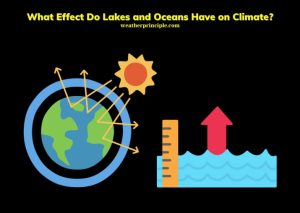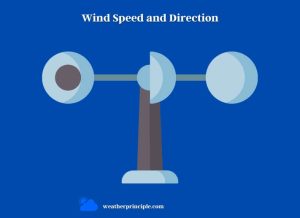Published on: December 6, 2023
Written by Taha Nur / Fact-checked by Kader Khan
The climate of the Midwest region is characterized by its significant seasonal temperature variations and diverse weather conditions. This area experiences a wide range of temperatures throughout the year due to its location and geographical features.
The Midwest, encompassing states like Illinois, Indiana, Iowa, Kansas, Michigan, Minnesota, Missouri, Nebraska, North Dakota, Ohio, South Dakota, and Wisconsin, is known for its distinct four-season climate. The region’s geographical features, including the Great Plains and the Great Lakes, play a pivotal role in shaping its weather patterns. These features contribute to the Midwest’s varied climate, which ranges from humid continental in the north to humid subtropical in the south.

In winter, the Midwest often faces harsh conditions, with average temperatures varying significantly across the region. Northern areas typically experience colder winters, with temperatures often dropping below freezing. Snowfall is common, particularly around the Great Lakes, where lake-effect snow can lead to substantial accumulations. In contrast, the southern parts of the Midwest tend to have milder winters.
Summer in the Midwest brings warmer temperatures, with July being the hottest month. The climate during this season is generally warm and humid, especially in the southern areas. Average summer temperatures can reach into the high 80s (°F), although heat waves with higher temperatures are not uncommon.
Precipitation in the Midwest varies, with the region receiving an average of 20 to 40 inches annually. Rainfall is fairly evenly distributed throughout the year, although spring and summer typically see slightly higher amounts. This precipitation supports the Midwest’s extensive agricultural activities and contributes to its rich natural resources, including fertile soil and abundant water supplies.
The human characteristics of the region, including its cities, industries, and farmlands, also interact with the natural environment, influencing the Midwest’s climate to some extent. For a more detailed understanding of the Midwest’s climate, including a comprehensive climate map and insights into its seasonal variations, we invite you to read the detailed article below.
What is the Climate of the Midwest Region?
The Seasonal Shifts in the Midwest
Winter Weather Patterns
The Midwest is no stranger to chilly winters. Cities like Chicago and Minneapolis become winter wonderlands, with temperatures often dipping below freezing. Let’s look at some average winter temperatures across the region:
| City | Average Winter Temperature (°F) |
| Chicago, IL | 26 |
| Minneapolis, MN | 19 |
| Omaha, NE | 24 |
| Indianapolis, IN | 29 |
| Detroit, MI | 25 |

These numbers show just how brisk Midwest winters can be. The cold air sweeping down from Canada meets the relatively warmer Great Lakes, leading to significant snowfall, especially near the lakes.
Summer Climate Characteristics
Come summer, the Midwest transforms. The same cities that were freezing a few months ago now experience warm, sometimes even hot, weather. Humidity levels rise, making some days feel hotter than they actually are. July and August can see temperatures soaring into the 80s and 90s (°F). This shift from freezing winters to hot summers is a hallmark of the Midwest’s continental climate.
Geographical Influences on Midwest Climate
Role of the Great Lakes
The Great Lakes are like natural climate moderators for the Midwest. In winter, they can slow down the onset of cold temperatures, while in summer, they have a cooling effect. This is particularly noticeable in areas close to the lakes. Cities like Chicago experience slightly milder winters and cooler summers compared to those further inland.
Impact of the Great Plains
The Great Plains, stretching west of the Midwest, also influence the region’s climate. They act as a pathway for various weather systems. In the absence of significant geographical barriers, cold air from the Arctic and warm air from the Gulf of Mexico freely sweep across the plains, leading to the Midwest’s notorious temperature swings.
Variability of Temperatures Throughout the Year
Factors Contributing to Temperature Fluctuations
You might wonder why the Midwest sees such dramatic temperature changes. It’s a mix of geography and air currents. The region sits in a spot where polar air from the north meets subtropical air from the south. This clash, combined with the flat, open landscape of the Great Plains, sets the stage for everything from heatwaves to cold snaps.
Historical Temperature Trends
Over the years, the Midwest has recorded some significant temperature variations. Historical data shows a gradual warming trend, especially in the last few decades. This change is consistent with global patterns and is something to keep an eye on for future climate predictions.
Precipitation Patterns Across the Midwest
Rainfall Distribution
Rainfall in the Midwest doesn’t just help the crops grow; it’s part of the region’s identity. The area receives a moderate amount of rain, typically spread throughout the year. Spring and summer tend to be slightly wetter, which is great for agriculture.
Snowfall and Its Impact
Snow is a big deal in the Midwest, especially near the Great Lakes. The ‘lake-effect’ snow can lead to significant accumulations, impacting everything from daily commutes to school schedules. This snowfall is crucial for the region’s water supply and ecosystem.
Extreme Weather Events and Their Frequency
Tornadoes and Severe Storms
The Midwest is part of Tornado Alley, a region known for frequent tornadoes. These powerful storms are most common in spring and early summer. They can be devastating, reminding us of nature’s unpredictable power.
Droughts and Floods
Droughts and floods are also part of the Midwest’s climate story. While the region generally has enough rainfall, there are periods of dryness that can impact agriculture and water supply. Conversely, heavy rains can lead to flooding, a challenge for urban and rural areas alike.
Human Impact on the Midwest’s Climate
Urbanization and Its Effects
As cities in the Midwest grow, they impact the local climate. Urban areas tend to be warmer than their rural counterparts, a phenomenon known as the “urban heat island” effect. This can alter local weather patterns and exacerbate heatwaves.
Agricultural Practices and Climate Interactions
Agriculture is a major part of the Midwest’s identity. Farming practices have both shaped and been shaped by the regional climate. The use of irrigation, crop rotation, and other practices play a role in how the land interacts with the climate.
Future Climate Projections for the Midwest
Predicted Changes in Temperature and Precipitation
Looking ahead, climate models predict several changes for the Midwest. We’re likely to see warmer temperatures, especially in winter, and possibly more precipitation. These changes could have wide-ranging impacts on everything from agriculture to daily life.
| Year | Projected Temperature Increase (°F) | Projected Precipitation Increase (%) |
| 2030 | 1.5 | 2 |
| 2050 | 3 | 4 |

Adaptation and Mitigation Strategies
As the climate changes, the Midwest will need to adapt. This could mean everything from improving city infrastructure to handle more extreme weather, to changing farming practices to cope with new conditions. It’s a challenge, but also an opportunity to build a more resilient Midwest.
FAQs
How Does Lake-Effect Snow Influence the Midwest Climate?
Lake-effect snow significantly impacts the Midwest, particularly in areas adjacent to the Great Lakes. This phenomenon occurs when cold winter air moves over the warmer waters of the lakes, picking up moisture and heat. As this moist air moves over the colder land, it cools down, leading to heavy snowfall on the leeward shores of the lakes. This can result in significant snowfall in a short period, often creating challenging conditions for transportation and daily life. Cities like Buffalo, NY, and Cleveland, OH, frequently experience this unique weather pattern, which can contribute to their high annual snowfall totals.
How Do Lakes and Oceans Affect the Climate of the Midwest Region?
The climate dynamics and water bodies of the Midwest region are greatly influenced by the presence of lakes and oceans. These water bodies play a crucial role in regulating temperatures and precipitation levels, impacting the overall climate of the area.
They contribute to the development of weather patterns and seasonal changes.
What Role Do the Appalachian Mountains Play in the Midwest’s Climate?
The Appalachian Mountains, located to the east of the Midwest, play a subtle but important role in the region’s climate. These mountains act as a barrier that influences weather patterns. They can block or slow down weather systems moving from the east, often leading to drier conditions in the Midwest. Additionally, the mountains can affect the path of storms, steering them away from the Midwest. This topographical feature contributes to the variability of weather in the Midwest, particularly affecting precipitation patterns.
How Do Seasonal Wind Patterns Affect the Midwest?
Seasonal wind patterns are a key factor in the Midwest’s climate. In the winter, the region often experiences northerly winds, which bring cold air from Canada, leading to lower temperatures. In contrast, during the summer, southerly winds prevail, bringing warmer air from the Gulf of Mexico. This shift in wind direction is crucial in driving the significant temperature differences between seasons. Additionally, these winds can influence precipitation, with summer winds contributing to humidity and potential thunderstorms.
Is the Midwest Prone to El Niño or La Niña Events?
The Midwest is indeed influenced by El Niño and La Niña events, which are part of the El Niño-Southern Oscillation (ENSO) cycle. El Niño, characterized by warmer ocean temperatures in the equatorial Pacific, typically leads to milder and drier winters in the Midwest. On the other hand, La Niña, associated with cooler ocean temperatures, often results in colder and snowier winters in the region. These global climatic events can disrupt typical weather patterns, affecting agriculture, water resources, and overall weather stability in the Midwest.
How Does Climate Change Impact the Midwest’s Climate?
Climate change is increasingly impacting the Midwest’s climate. The region is experiencing a trend of rising temperatures, leading to longer growing seasons but also more frequent and intense heatwaves. Winters are becoming milder with less snowfall, altering ecosystems and water resources. Additionally, there is an increase in extreme weather events, including heavy downpours and severe storms. These changes pose challenges for agriculture, urban planning, and natural resource management, requiring adaptation and mitigation strategies to address the evolving climate conditions.
What Is the Effect of the Midwest’s Climate on Agriculture?
The Midwest’s climate has a profound effect on its agriculture, often referred to as the nation’s “breadbasket.” The region’s distinct seasons, with warm summers and sufficient rainfall, create ideal conditions for growing a variety of crops, especially corn and soybeans. However, the climate also poses challenges, such as the risk of spring flooding, summer droughts, and early or late frosts. Farmers must constantly adapt to these conditions, utilizing weather forecasts and modern agricultural practices to maximize crop yields and manage risks associated with climate variability.
Are There Unique Weather Phenomena Specific to the Midwest?
The Midwest is known for several unique weather phenomena. Apart from the already mentioned lake-effect snow and involvement in Tornado Alley, the region occasionally experiences derechos – widespread, long-lived wind storms associated with bands of rapidly moving thunderstorms. These can cause significant damage and are characterized by their straight-line wind patterns. Another phenomenon is the “Indian summer,” a period of unseasonably warm weather in autumn, often following a cold spell. These phenomena add to the dynamic and sometimes unpredictable nature of the Midwest’s climate.
The Midwest’s climate is a tapestry of extremes, shaped by its geography and marked by significant seasonal changes. From freezing winters to hot summers, the region experiences it all. Understanding these patterns, their causes, and their potential future changes is key to living in and managing this dynamic part of the world.



